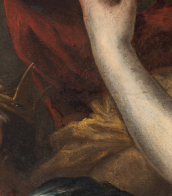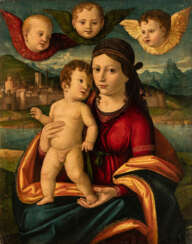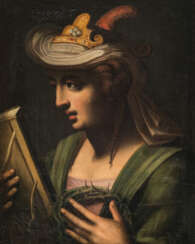oneglia

Edvard Frank was a German painter of the "lost generation".
He began his training in 1926 at the Trier School of Crafts and Applied Arts with August Trümper, then studied at the Cologne Werkschulen with Richard Seewald, and moved to the Academy in Berlin to study in Karl Hofer's class. After being called up for military service, he probably injured himself. At the end of the war he evaded another call-up by deserting. At the end of the war he lived in the district town of Birkenfeld in Hunsrück until the mid-1950s. Here he produced a large number of drawings and watercolours, which he was reluctant to give up. After the war he became a co-founder of the Palatinate Secession, and in 1946 a member of the New Darmstadt Secession as well as the Arbeitsgemeinschaft bildender Künstler am Mittelrhein, founded in 1948. He enjoyed increasing success with exhibitions at the Städtische Kunstsammlung Baden-Baden as well as in Hamburg, Lübeck, Berlin, Karlsruhe, Mannheim, Mainz and Kaiserslautern. The Brücke painter Erich Heckel appreciated his work. His estate, which includes personal documents and correspondence as well as sketchbooks and photographs of his works, is preserved in the Landesarchiv Saarbrücken.
Frank's preferred subjects were often erotic and oriented towards classicist motifs.
Edvard Frank was a member of the Deutscher Künstlerbund.
Translated with www.DeepL.com/Translator (free version)






Ennio Morlotti is an Italian abstractionist painter.
Morlotti studied painting at the Academy of Fine Arts in Florence and at the Accademia di Brera in Milan. In 1947 he was one of the founders of the post-war New Front for Art (Fronte Nuovo delle Arti) movement.



Mario Schifano was an Italian painter and collagist of the Postmodern tradition. He also achieved some renown as a film-maker and rock musician.
He is considered to be one of the most significant and pre-eminent artists of Italian postmodernism.


Ennio Morlotti is an Italian abstractionist painter.
Morlotti studied painting at the Academy of Fine Arts in Florence and at the Accademia di Brera in Milan. In 1947 he was one of the founders of the post-war New Front for Art (Fronte Nuovo delle Arti) movement.


Peter Jakob Schober was a prominent German painter associated with Expressive Realism. Despite facing adversity during World War I and II, he remained committed to art and exhibited remarkable resilience. His artistic journey took him from Stuttgart to Paris, where he drew inspiration from Impressionism and Cézanne's techniques. Returning to Germany, he embarked on a successful career as an artist, receiving numerous commissions for art am Bau.
Schober's work expanded beyond Germany through his travels to Spain, France, Italy, and North Africa. His involvement in art organizations, including chairing the Stuttgarter Sezession, solidified his influence. The accolades and recognition he received, such as the Bundesverdienstkreuz and professorship, celebrated his artistic excellence. Peter Jakob Schober's impact on the art world remains enduring and profound.


Mario Schifano was an Italian painter and collagist of the Postmodern tradition. He also achieved some renown as a film-maker and rock musician.
He is considered to be one of the most significant and pre-eminent artists of Italian postmodernism.


Mario Schifano was an Italian painter and collagist of the Postmodern tradition. He also achieved some renown as a film-maker and rock musician.
He is considered to be one of the most significant and pre-eminent artists of Italian postmodernism.











































































